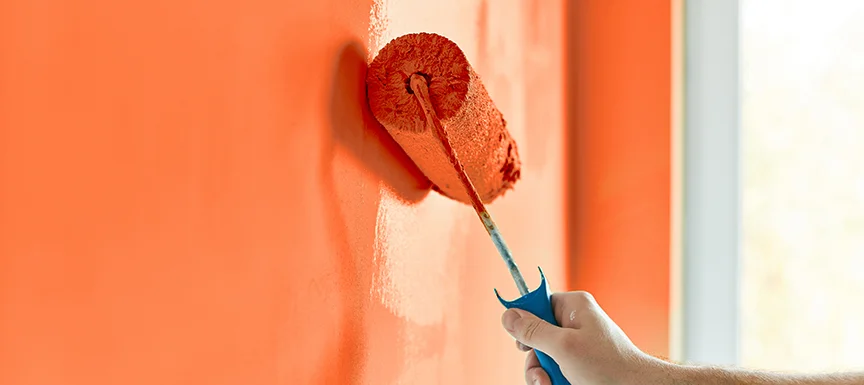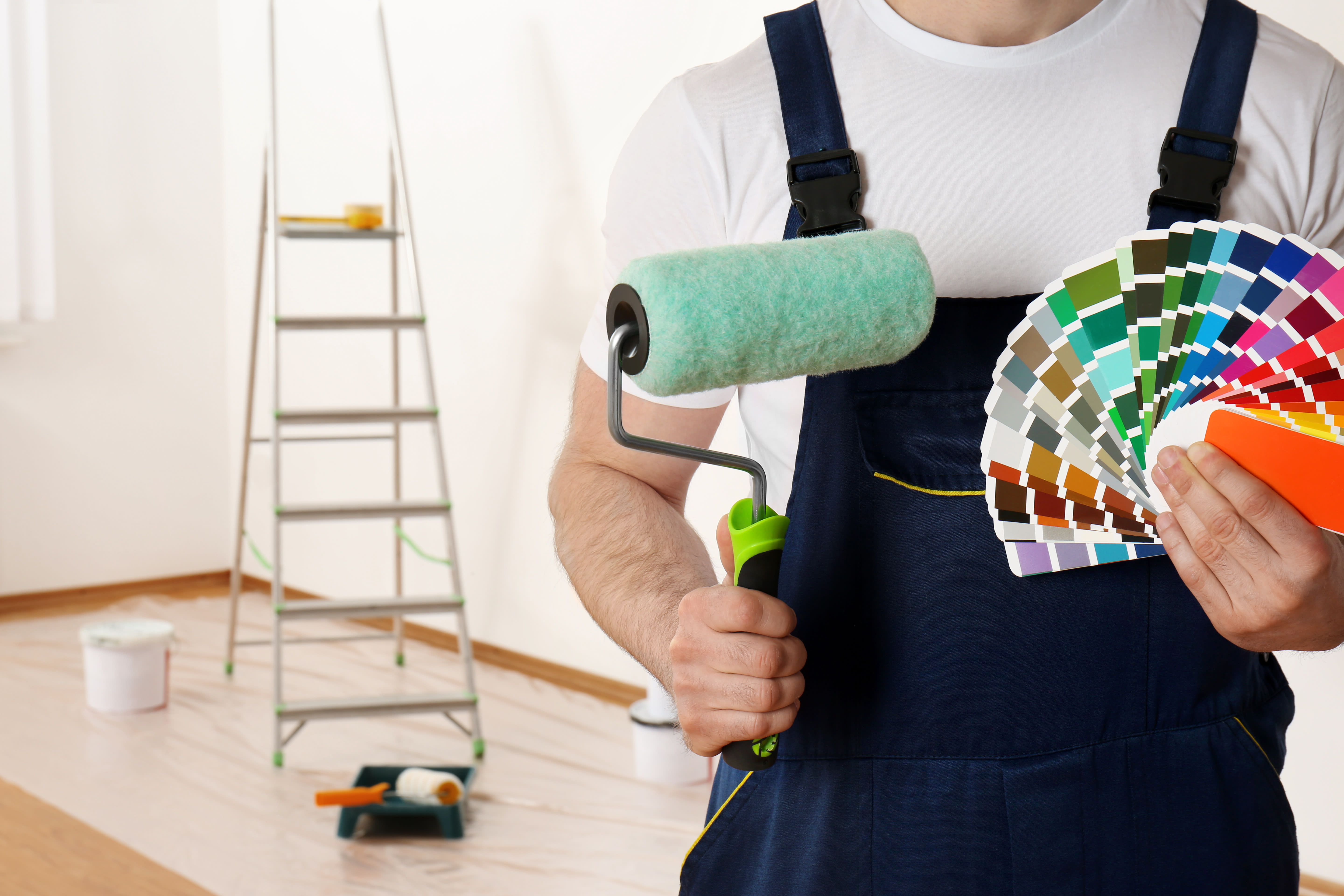Discovering the Various Kinds of Paint: An Overview for each Job
Checking out the various types of paint is vital for accomplishing the preferred outcome in any project. From water-based options that offer comfort to oil-based paints understood for their toughness, each selection has its values. Specialized paints can include distinct textures or finishes, while eco-friendly alternatives deal with those looking for sustainability. Comprehending these distinctions can greatly influence the success of a painting endeavor. What variables should one take into consideration when making the ideal selection?
Comprehending Paint Types: Water-Based vs. Oil-Based
Paint types can significantly affect a job's result, and comprehending the differences between water-based and oil-based paints is crucial for informed decision-making. Water-based paints, typically described as latex paints, are composed of water as the main solvent. They dry rapidly, discharge less volatile organic compounds (VOCs), and are easy to tidy up with soap and water. This makes them a popular selection for indoor applications and atmospheres where air high quality is a concern.
On the other hand, oil-based paints use organic solvents, supplying a long lasting, shiny coating perfect for surface areas revealed to damage, such as trim and closets. They take longer to dry, need mineral spirits for clean-up, and have a more powerful smell. corpus christi paint store. Choosing in between these 2 types depends on the details requirements of the project, considering elements such as desired surface, application environment, and convenience of upkeep. Each type has unique advantages and restrictions, directing the option procedure
The Complete Issues: Selecting In Between Matte, Satin, and Gloss
When choosing a paint finish, the option in between matte and glossy options substantially impacts both visual appeals and capability. Matte finishes supply a subtle, non-reflective appearance that can conceal surface imperfections, while glossy finishes give durability and ease of cleansing. Recognizing the advantages and considerations of each can aid in making a notified choice for any paint task.
Matte End Up Advantages
Lots of house owners discuss the qualities of different surfaces, matte paint offers distinctive benefits that make it a prominent choice for both interior and outside applications. Among the primary advantages of matte coating is its capability to hide surface area flaws, creating a smoother look on walls. This quality is specifically useful in older homes or areas with uneven surface areas. Furthermore, matte paint absorbs light instead of showing it, which can enhance the aesthetic of an area by giving an extra low-key and innovative appearance. Matte surfaces are usually less complicated to touch up than glossier alternatives, as they can mix a lot more effortlessly when applied over existing paint. In general, matte paint is an outstanding choice for those looking for an improved and elegant finish.
Shiny Complete Factors To Consider
A shiny finish can considerably change the assumption of a room, supplying a streamlined and reflective high quality that enhances both color vibrancy and light within a room. This surface is commonly preferred for high-traffic locations and surfaces like bathroom and kitchens, where durability and simplicity of cleaning are necessary. Nevertheless, its reflective nature can highlight imperfections on wall surfaces, making appropriate surface prep work essential. Glossy paints additionally often tend to reveal finger prints and smudges extra conveniently, requiring normal upkeep. Additionally, lighting plays a considerable function; in brilliant atmospheres, a glossy surface may create glow, impacting the general aesthetic. Mindful factor to consider of the specific application and setting is essential when selecting a shiny coating for any kind of project.
Specialized Paints: When to Utilize Textured or Chalk Paint
Specialty paints, such as distinctive and chalk paint, deal one-of-a-kind visual and sensible benefits that can enhance various surfaces. Textured paint is suitable for producing deepness and measurement on wall surfaces, hiding imperfections while including a three-dimensional feel. It is particularly beneficial in high-traffic locations where resilience and visual rate of interest are essential.

Both sorts of specialized paints can change areas, but selecting the appropriate one depends upon the wanted effect and surface demands. Distinctive paint may fit bigger locations, while chalk paint can renew smaller products, showcasing creative thinking and individual design in any kind of project.
Outside Paints: Securing Your Surface Areas From the Components
Outdoor paints are vital for safeguarding surfaces against different weather condition problems. Understanding their weather condition resistance attributes, correct surface area preparation requirements, and efficient application strategies can considerably improve durability and performance. This section will certainly lay out vital considerations for selecting and utilizing exterior paints effectively.
Weather Condition Resistance Features
Climate resistance is a vital attribute of exterior paints, as it determines how well surface areas can withstand the rough components of nature. Top notch outdoor paints are formulated to withstand damages from UV rays, dampness, and temperature level changes. UV resistance warranties colors remain lively in time, protecting against fading and discoloration. Dampness resistance safeguards versus mold and mold, which can compromise the stability of surfaces. Furthermore, paints with superb temperature resistance can contract and increase without breaking, maintaining their protective qualities. When picking outdoor paints, it is essential to think about these climate resistance functions, as they add to the long life and toughness of colored surface areas, making specific they remain aesthetically pleasing and useful regardless of exposure to the components.
Surface Preparation Requirements
Correct surface area prep work is an essential action in achieving the most effective results with outside paints. To ensure ideal bond and longevity, surface areas must be completely cleaned up, removing dirt, mildew, and grease. This can be completed using a pressure washer or a scrub brush with a suitable cleaning service. When cleansed, surface areas need to be inspected for any type of peeling or flaking paint, which need to be scratched away to create a smooth foundation. Fixing any cracks or holes is additionally essential, as these can enable dampness seepage. Furthermore, sanding harsh areas promotes much better paint attachment. Applying a guide suited for outdoor usage can improve the paint's efficiency, guaranteeing a resilient finish that stands up to the elements. Proper prep work is crucial to an effective outdoor painting job.
Application Techniques Tips
While using exterior paints, it is vital to utilize efficient strategies that ensure surfaces are well-protected against the aspects. Choose the right day for paint; low humidity and light temperatures boost bond and drying out. Prepping the surface extensively-- cleaning, fining sand, and more info priming-- makes sure much better paint adhesion and resilience. Using top notch brushes or rollers can offer a smoother finish, while spray paint may cover huge areas efficiently. Using paint in slim, even layers protects against runs and drips. It is recommended to follow producer instructions concerning drying times between layers. Ultimately, confirm proper air flow throughout application to assist in drying and minimize direct exposure to fumes. These strategies greatly improve the longevity and performance of outside paint.
Eco-Friendly Options: Low-VOC and Zero-VOC Paints
As consumers come to be increasingly knowledgeable about the environmental influence of their options, zero-voc and low-voc paints have arised as prominent options. These paints are developed to include fewer unstable organic substances (VOCs), which are chemicals that can evaporate right into the air and contribute to air pollution and health issue. Low-VOC paints usually include a restricted quantity of VOCs, while zero-VOC paints have minimal levels, making them much safer for both exterior and interior use.
The advantages of utilizing low-VOC and zero-VOC paints extend past environmental factors to consider; they likewise improve interior air high quality, decreasing the danger of respiratory system concerns and allergic reactions. Several manufacturers now use a selection of colors and surfaces in environmentally friendly alternatives, making it easier for consumers to find suitable items for their projects. By going with these paints, individuals can contribute to a healthier setting while still achieving the aesthetic they want in their spaces.
Tools and Methods for a Remarkable Application
Accomplishing a remarkable paint application requires the right tools and strategies, which can substantially enhance the final outcome. Choosing the appropriate brush or roller is essential; brushes work well for sides and detailed locations, while rollers cover larger surfaces efficiently. Utilizing top notch products guarantees much better paint distribution and reduces streaks. For excellent outcomes, surface preparation is crucial. This consists of cleaning, fining sand, and priming surfaces to promote adhesion.
Strategy additionally plays a considerable duty. The "W" technique with a roller aids to evenly disperse paint, while long, smooth strokes with a brush stop noticeable lines. Functioning in areas enables better control and blending. In addition, applying thin coats is preferable to thick layers, reducing the threat of drips and irregular structures. Maintaining a wet edge throughout application aids achieve seamless modifications in between locations. By combining these strategies and devices, one can achieve a professional and refined surface.
Tips for Preserving and Taking Care Of Your Painted Surfaces
Proper maintenance and care of colored surfaces can greatly prolong their life-span and maintain their look. Regular cleaning is important; utilizing a soft towel or sponge with mild soap and water can remove dust and dirt without harming the paint. It is recommended to prevent unpleasant cleansers or scrubbing pads, as these can scrape the surface area. In addition, applying a fresh layer of paint every couple of years can secure and renew the color versus wear.
For outside surface areas, evaluating for indications of peeling or fading consistently is important. Without delay addressing any type of concerns prevents more damages. In locations susceptible to wetness, such as restrooms, using mold-resistant paint and making certain correct ventilation can help keep the honesty of the paint. Making use of safety surfaces can protect against UV rays and discolorations, making sure that painted surfaces remain vibrant and enticing for years to come, eventually improving the general aesthetic of the space.
Visual Often Asked Concerns
Can I Mix Different Kind Of Paint With Each Other?
Mixing different kinds of paint is typically not advised, as it can cause concerns like inadequate adhesion, inconsistent texture, or unexpected chemical reactions. It's finest to make use of suitable paints for ideal results and sturdiness.

Just how Do I Appropriately Store Surplus Paint?
To appropriately store leftover paint, secure the container securely, tag it with the date and shade, and keep it in an awesome, dry area far from direct sunshine and severe temperatures for suitable conservation.
What Is the most effective Method to Dispose of Unused Paint?
The finest method to take care of unused paint is to check regional guidelines, as several areas have designated contaminated materials centers. Alternatively, consider contributing useful paint to area companies or schools for their projects.
Exactly How Can I Inform if Paint Is Still Good to Utilize?
To establish if paint is still good, examine its color, consistency, and smell. If it shows up apart, has an undesirable smell, or reveals substantial adjustments in texture, it's likely no longer usable.
Are There Age Restrictions for Investing In Paint Products?
In many regions, there are no specific age limitations for buying paint items. Nevertheless, some shops may need clients to be a minimum of 18 years old, particularly for products including solvents or dangerous materials.
Paint kinds can significantly influence a task's result, and comprehending the distinctions between water-based and oil-based paints is important for informed decision-making. Water-based paints, usually referred to as latex paints, are made up of water as the primary solvent. In comparison, oil-based paints utilize natural solvents, giving a long lasting, glossy coating perfect for surfaces exposed to put on and tear, such as trim and cupboards. Specialized paints, such as textured and chalk paint, deal special aesthetic and functional benefits that can enhance different surfaces. In locations prone to dampness, such as restrooms, using mold-resistant paint and making certain appropriate air flow can assist maintain the honesty of the paint.